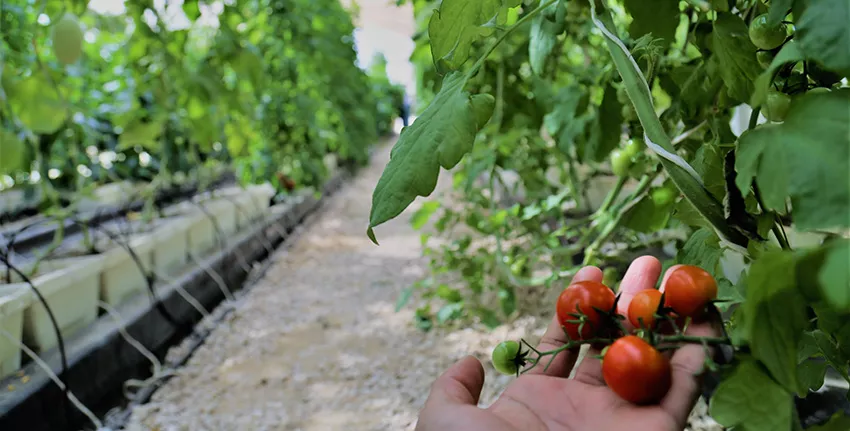Low-cost technology to make horticulture more profitable in UAE
30 May 2017
Horticultural production can become more resource-efficient and profitable under UAE conditions thanks to a low-cost net-house technology, a new study finds.
The UAE is one of the most water-scarce countries in the world. It relies heavily on its groundwater reserves and energy-intensive desalinated water to meet the domestic demand, including in agriculture.
The country is also highly dependent on food imports like vegetables and fruits. By some estimates, 62 percent of vegetables and 47 percent of fruits come from abroad. This means there is great potential to increase horticultural production in the UAE as the food demand is set to grow.
Yet unfavorable environmental conditions mean that much of the food is produced in greenhouses that require lots of energy and water. In recent years greenhouse production has been on the rise. Between 2005 and 2011 the number of greenhouses in the UAE grew by 48 percent, reaching 14,777. But further growth is constrained by a competing demand for water for human consumption. As agriculture is by far the most water-intensive sector, it is a prime target for water conservation efforts.
To find out how to improve water and energy use efficiency of horticultural production under UAE conditions, a team of researchers at ICBA has carried out an extensive agronomic and economic analysis of growing cherry tomato and cucumber in a high-tech greenhouse and a low-tech net-house respectively.
Researchers compared a common model of greenhouse with a fan-pad cooling system and a net-house model equipped with a misting system and a shade net. They found that greenhouse cooling is the most water-intensive process as it consumed 3.5 times more water than the amount required to irrigate cherry tomato. In contrast, the misting system in the net-house used about 75 percent of the water to irrigate cucumber. Data also showed that the greenhouse consumed 32 times more energy than the misting system in the net-house.
As the UAE climate is best for fruit and vegetable production between October and May, the study shows that the net-house can be a viable alternative to the greenhouse. The findings also demonstrate how a low-cost technology can contribute to increasing horticultural production in the country while significantly reducing energy and water consumption.
As the water shortage becomes more acute in the future, it is important to implement sustainable solutions for food production. And more policies encouraging local growers to adopt technologies that save water and energy will only help this process.












